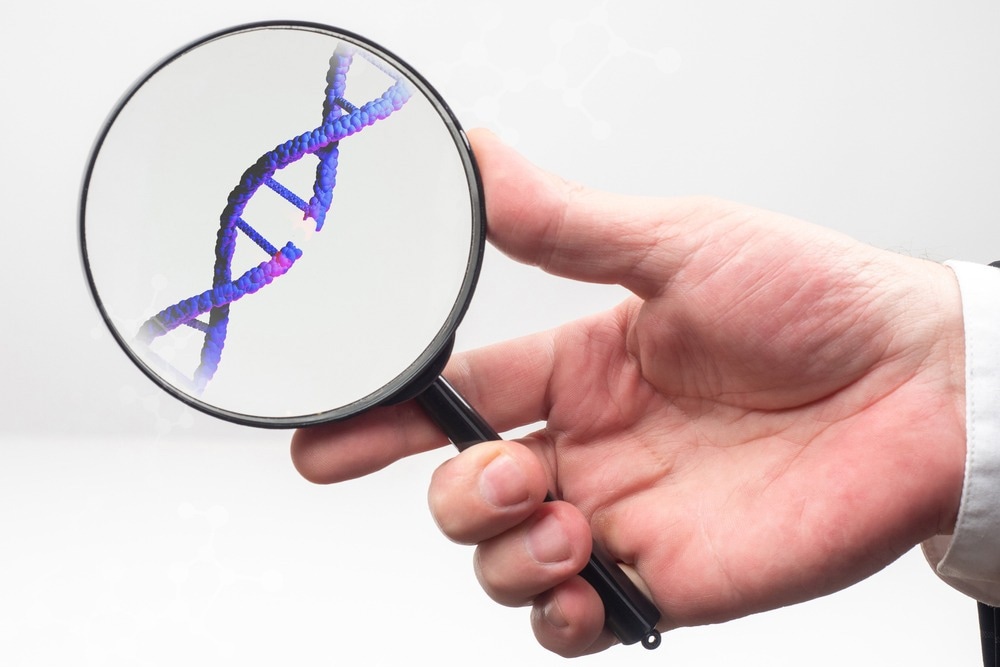Recently, next-generation sequencing (NGS) technology has been effectively used for disease management and the formulation of new treatments. Genome sequencing (GS) and exome sequencing (ES) methods, both of which are based on NGS, have radically changed the diagnosis of rare Mendelian diseases.
Despite the development of these innovative techniques, several rare diseases remain undiagnosed. In a recent the Annual Review of Medicine study, scientists review existing literature to evaluate the advancements in GS and ES techniques for the accurate detection of undiagnosed syndromes.
 Study: Exome/Genome Sequencing in Undiagnosed Syndromes. Image Credit: FOTOGRIN/Shutterstock
Study: Exome/Genome Sequencing in Undiagnosed Syndromes. Image Credit: FOTOGRIN/Shutterstock
The detection of undiagnosed syndromes
Undiagnosed syndromes or diseases cannot be detected using standard clinical and laboratory techniques. Presently, a variety of rare/ultrarare disorders exist, the majority of which are genetic in etiology.
Rare diseases are estimated to affect one in two thousand individuals in the United States. Nevertheless, about 7% of the U.S. population are affected by rare diseases. Taken together, these diseases impact the public healthcare system and society, in addition to triggering a psychosocial toll on the patients.
Recent advancements in genomic sequencing techniques have enabled the diagnosis of around 50% of rare diseases. This accomplishment heavily relies on ES and GS methods, which have transformed the diagnostic scenario for these rare diseases.
The ES method is associated with the simultaneous sequencing of millions of short fragments of the coding region, whereas the GS method is involved with sequencing both coding and non-coding regions. Based on the genetic information obtained from the NGS approach, clinicians can now offer precision medicine to individuals diagnosed with rare/ultrarare diseases.
Although ES is more commonly applied in medical practices due to its ability to identify noncoding variants and lower cost of application, GS has higher diagnostic yields. A higher diagnostic yield is achieved when ES/GS methods are applied for the identification of genetic disorders associated with the musculoskeletal system, vision, hearing, central nervous system, cardiovascular system, skin, skeletal system, and, multiple congenital anomalies.
The effectiveness of the ES/GS approach for undiagnosed syndromes
The application of ES and GS approaches has exponentially increased the detection of novel genes linked to diseases. Over the past few years, more than 250 new genes related to diseases have been discovered compared to when these techniques were non-existent.
At present, more than 4,600 genes have been discovered to be associated with Mendelian disorders. Moreover, it has been predicted that ES/GS may detect around 10,000 additional genes linked to Mendelian conditions. Notably, the current discoveries of new genes by ES/GS are increasingly associated with ultrarare disorders.
The ever-expanding public databases associated with NGS technology have considerably enhanced international connectivity. This approach is beneficial because it has enabled the exploration of overlapping and distinct phenotypes found in patients with VUS. Application of the ES/GS approach provides greater insight into the pathogenesis of genes.
Between 25-30% of patients who received a diagnosis with ES/GS have experienced a change in their medical management. These changes are associated with specific treatments, eligibility for clinical trials, accurate reproductive risk assessment, and surveillance for additional manifestations. In some rare cases, ES/GS analysis can expedite the formulation of diagnosis-specific interventions for patients with rare diseases.
Challenges associated with ES/GS
Despite several advances in ES/GS techniques, a considerable proportion of individuals with undiagnosed diseases do not obtain a proper diagnosis. This variability depends on the type of sequencing used and differential analytical approaches between laboratories. For example, laboratories often ignore variants that are discordant with the phenotype.
Some of the reasons attributed to the inability of ES/GS methods in diagnosing more than 50% of rare diseases include a prevalence of variants of uncertain significance (VUS), limitations of the technology, discordant interpretations, and the existence of phenocopies of disorders.
VUS are commonly reported with NGS; however, there remains a lack of evidence on their pathogenicity or benignity. Most VUS are coding missense variants, which increases the difficulty in predicting their impacts.
Understanding the impact of other noncoding variants and synonymous variants is also difficult. The prevalence of these variants presents considerable challenges in accurate diagnoses and establishing new gene-disease associations.
Typically, case matching, animal modeling of variants/genes, and functional assays such as RNA-Seq are used to analyze VUS. However, these techniques require considerable resources, which are scarce in clinical settings and time-consuming. Scientists have also stated that phenocopies of Mendelian disorders are another contributor to diagnostic challenges.
NGS has also been associated with technical limitations related to the detection of specific variants. For example, polymerase chain reaction (PCR) amplification induces GC-rich areas of the exome to not be amplified suitably in ES. This limitation can be overcome by performing PCR-free GS. Since NGS cannot detect epigenetic abnormalities, there is a possibility that disorders that appear to be Mendelian can be missed.
Journal reference:
- Sullivan, A. J., Schoch, K., Spillman, R. C., & Shashi, V. (2023) Exome/Genome Sequencing in Undiagnosed Syndromes. Annual Review of Medicine 74(1); 489-502. doi:10.1146/annurev-med-042921-110721.